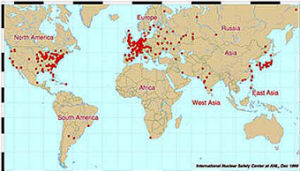
Natural disasters and society
Although science still has difficulties in predicting natural catastrophes, unpredictability is a major current theme for several fields of study, human action on which the problem of these catastrophes can be expanded must be rethought.
catastrophes, unpredictability is a major current theme for several fields of study, human action on which the problem of these catastrophes can be expanded must be rethought.
It’s not just about interfering with earthquakes, asteroid routes, weather problems and changes in the planet’s magnetic field, the problem is the social dimension that each catastrophe can take, like the Cumbre Vieja volcano in La Palma, which does not have fatal victims, but the problem of air quality, the displacement of families, the loss of family income, among others, what worries us is the possibility of a social catastrophe, at the moment, the government there declares that the volcano can go to sleep.
The Semeru catastrophe in Indonesia, which counted 34 dead until yesterday, and whose predictability was not possible is a fatality, but the tsunami in Fukushima in 2011 that affected an atomic plant and made an entire region uninhabitable has the human recklessness of building plants in disaster-prone areas warns of a serious and long-standing problem: the nuclear plants, the millions of liters of water used to cool the now inactive but radioactive plant, was dumped into the sea.
European countries are the ones that most use nuclear power plants, and a fossil fuel supply crisis, mostly coming from Russia, is a related problem, which aggravates the social danger even more. Looking at the map (figure) we also notice that many plants they are on the waterfront and the risk of tsunamis is even more serious, Fukushima taught.
In the world, 17% of the energy used is nuclear, 40% is still coal, the oldest fuel typical of the first industrial revolution, fossil (oil) is 40%, hydraulic and wind power is only 2% with a forecast of 3% for 2024 , a growth too small to be considered an effort that could reveal a change of scenario, of course there are associated economic interests.
The serious problem of nuclear power plants, which can themselves have accidents like the one at Chernobyl, cannot be underestimated the serious problem of some natural catastrophe that could affect the power plant’s problems, with huge social losses (generally only economic , which are associated of course) that a disaster could cause.
In the world, there are 440 plants in operation and 23 under construction, Europe has 207 plants and 7 under construction, the map shows the huge number by the sea, in inhabited regions and subject to earthquakes (tectonic faults for example), after the Europe follows North America with 123 plants, Japan, China and Korea with 82 and 7 under construction.
Natural disasters occur, Germany decided that it will not install new reactors and that the current ones will be deactivated after their useful life (32 years in your case), Turkey also abandoned the idea of building its first plant, in the opposite direction Brazil after the inauguration of Angra-2 (located by the sea) is already discussing Angra-3.
A complete social conscience must also foresee serious problems that a nuclear catastrophe could cause, and the consequences would be harsh for humanity.









